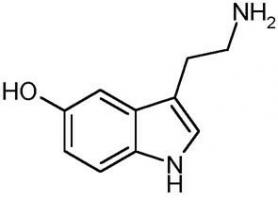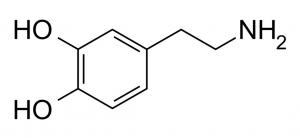Paquigiria: what it is, and health effects of this malformation
The brain is the result of many thousands of years of evolution of our species. It is one of the most complex natural phenomena that we are aware of, and the essence of what makes us human. Although it is not strange to the umbrella of scientific knowledge, every day new unknowns are raised about its operation.
Its appearance is also very striking. In the part visible to the outside, it is composed of a group of convolutions (bumps with similar shapes and locations for most people) and grooves (fissures or gaps that are located between the turns), which serve for a correct location of sections anatomical.
The adoption of its particular shape occurs throughout the gestation process, and is linked to the way in which genes act on our prenatal development. Genetic alterations, or maternal exposure to certain pathogens and toxins, can compromise such a delicate biological balance.
This article will address in particular one of these clinical circumstances, the paquigiria, which implies a situation of great severity and risk for the continuity of life. Here, its most essential characteristics, its causes and its frequent symptoms will be addressed.
- Related article: "The 12 most important brain diseases"
What is pachygyria?
The pachygyria is a serious and congenital malformation that affects the organization of neurons and the structure of the brain. It is characterized by the presence of scarcely pronounced brain gyrations, as well as by the thinning of the cortex, which alters the overall structure of the organ (few apparent elevations on its surface, the convolutions being thicker and broader than those observed in the average population). This neuropathology, which has multiple consequences for the sufferer, would be included in the nosological category of cortical dysgenesis.
Specifically, the pachygyria belongs to the lissencephaly family, between agiria (total absence of convolutions) and subcortical band heterotopia (presence of a "layer" of gray matter in the area between the walls of the lateral ventricles and the cortex itself), according to the classification of Dobyns. Such structural involvement is usually posteriorly predominant, although occasionally it also spreads to the front of the brain and compromises a wide range of cognitive functions.
In fact, it is a severe health condition, with very high mortality rates in the early years (It affects 1 / 90,000 people in its serious forms, although there is no information about it in the mild ones). It is also associated with the presence of extremely important physical and mental symptoms, which compromise daily autonomy and / or pose a real danger to survival. The most notable are muscle hypotonia, ataxia, or epileptiform seizures (resistant to medical treatment and very early onset), as well as severe intellectual disability and general delay of growth.
Diagnosis is usually carried out using two very different, but also complementary, strategies: clinical examination of signs / symptoms and the use of structural neuroimaging techniques such as magnetic resonance imaging.
This last procedure is very useful, since it allows obtaining images with great detail on the sulci / fissures and convolutions, which facilitates very much the clinical certification of this pathology (especially if it is taken into consideration that many of its symptoms can be confused with other more problematic common). The absence of dysmorphia (facial alterations typical of chromosomal abnormalities) could hinder their early detection.
- You may be interested: "Lissencephaly: symptoms, causes and treatment"
What are the symptoms of pachygyria?
Pachygyria has three basic symptoms: seizures, severe developmental disturbance, and intellectual disability. This triad can be easily detected from the fourth / fifth month of life, and usually warrants consultation with the pediatrician. Despite the fact that the general prognosis is dark (since these are symptoms resistant to pharmacological intervention or directly intractable), a Early care can minimize or avoid the occurrence of more serious complications (such as infectious processes, which are common in these patients).
1. Epileptic seizures
Pachygyria is one of the diseases that cause childhood epileptiform crises, which can pose a serious risk to life. Its establishment is precocious, because a high percentage of subjects experience them within the time range between the fourth and seventh month after birth (exceptionally after 18 months). It usually consists of seizures of abrupt onset, both in flexion (abdominal torsion in which the body adopts a posture similar to that of a "closed razor") as in extension (arms and legs stretched out in the form of "cross"). Until the expansion of functional neuroimaging technologies, these epilepsies were considered cryptogenic (of unknown origin).
- You may be interested: "Epilepsy: definition, causes, diagnosis and treatment"
2. Developmental delay
Delayed motor development, as well as in the use of language, is a common trait in people diagnosed with pachygyria. It is very common that the basic verbal catalog is not acquired to fully construct communicative acts, or that laxity in the arms and legs is evident.
Many of these infants are unable to maintain an upright, standing position without the support / help of third parties. A significant percentage also show a sign that will predict the problems mentioned: microcephaly, or what is the same, a reduction in the expected growth of the cranial perimeter.
3. Intellectual disability
People with pachygyria have a severe intellectual disability, practically all cognitive functions being altered and the potential to develop full personal autonomy.
Such difficulty would respond to the abnormal migration of neurons (which will be detailed below) and becomes more evident when the child must deal with all the demands of school or other contexts that require social skills and / or motorcycles. Identifying such a situation is key, because it will depend on whether an adequate program of curricular adaptation and therapeutic pedagogy can be deployed.
- You may be interested: "Intellectual and developmental disability"
What are the causes of pachygyria?
The pachygyria is caused by abnormal migration of neurons during gestation. This process lasts between the seventh and the twentieth week, and is essential for the system to acquire correct functionality from birth.
It is a peculiar "journey" that nerve cells undertake to relocate in a way that enables the characteristic cognition of being. human, and that requires ambulation from the ventricles to the outer cerebral cortex (traveling huge distances in proportion to their size). This phenomenon does not happen in a continuous way, but it appears as intermittent "streaks".
Yes OK the general purpose is to form six different layers of tissue, prepared to host the unfathomable complexity of the mind, in this case only four would be formed (and also subject to many structural problems). This laminar arrangement motivates the agenesis of the convolutions and / or sulci, being a result of the deficient organization of the brain. The observation of this abnormality, thanks to the optical or electronic microscopes, shows an anatomopathology that we proceed to indicate (for each of its four layers).
The first layer (molecular or plexiform), which is the outermost of our cerebral cortex, would not show aberrations of any kind. The neurons in this region would have a shape and location identical to those of a brain without problems. However, in the second there are already some important differences: the number of cells is clearly inferior and are disorganized, coexisting with neurons of layers II, V and VI of the brain normal. This quantitative / qualitative alteration impacts the general appearance of the organ (as it forms the true cortex of the organ).
The third layer is also very different from the six-ply cortex. Here the neurons are poorly organized and are distributed as broad columns, giving rise to a tissue of low density or thickness. There is also some indication of laminar necrosis, responsible for hindering proper cell migration. Finally, the fourth layer would also look thin, but built with white substance. invaded by a myriad of heterotopic neurons (located in spaces other than those they should occupy).
In addition to deficiencies in neuron migration, which is the common etiological basis for all lissencephaly, multiple environmental and genetic risk factors are known. In the next few lines we proceed to describe them in detail.
1. Exposure to substances and / or viral infections
Pachygyria usually appears in the fourth month of gestation, after the stage of neural migration. Although it is a problem that tends to appear sporadically (perhaps influenced by genetic factors), it is known that exposure to certain chemicals is closely related to the probability of suffering it.
The most common are ethanol (ethyl alcohol), methylmercury (which results from the activity of the industry that uses acetaldehyde; such as that of paper, plastics, paints, rubber or leather) and retinoic acid (a metabolite of vitamin A); but radiation exposure could also play a key role.
Cytomegalovirus infections (throughout pregnancy) have been associated with both pachygyria and other severe neuronal migration disorders. When an individual comes into contact with this particular pathogen, they usually retain it for life, but acute episodes during pregnancy can be very dangerous. The problem is that it tends not to be too invasive (asymptomatic) in those who are healthy, so it is recommended that diagnostic tests are carried out if it is believed to have been in contact with an infected person in phase sharp.
2. Genetic alterations
A succession of alterations in the genome have been described that are associated with an accentuated risk of pachygyria. The most common is the one involving chromosomes 17 and X, which are the most frequently detected when a cause is filiated at this level (which is not always possible). In other cases, a mutation in the reelin gene (essential for neural migration) has been found on chromosome 7.
Finally, it is also known that the absence of the LIS1 gene severely damages the structure of neurons. and its cortical disposition, for which it has been postulated as a suspect in the etiopathogenesis of pachygyria.
Bibliographic references:
- Tombul, T., Milanlioglu, A. and Odabas, O. (2015). A cause of intractable epilepsy: Bilateral posterior agyria-pachygyria. Dusunen Adam: The Journal of Psychiatry and Neurological Sciences, 28, 175-178.
- Xiao, J. Liu, Ch. And Wei, Y. (2003). CT and MRI of pachygyria and agyria. Sheng wu yi xue gong cheng xue za zhi. Journal of biomedical engineering, 20, 291-294.


